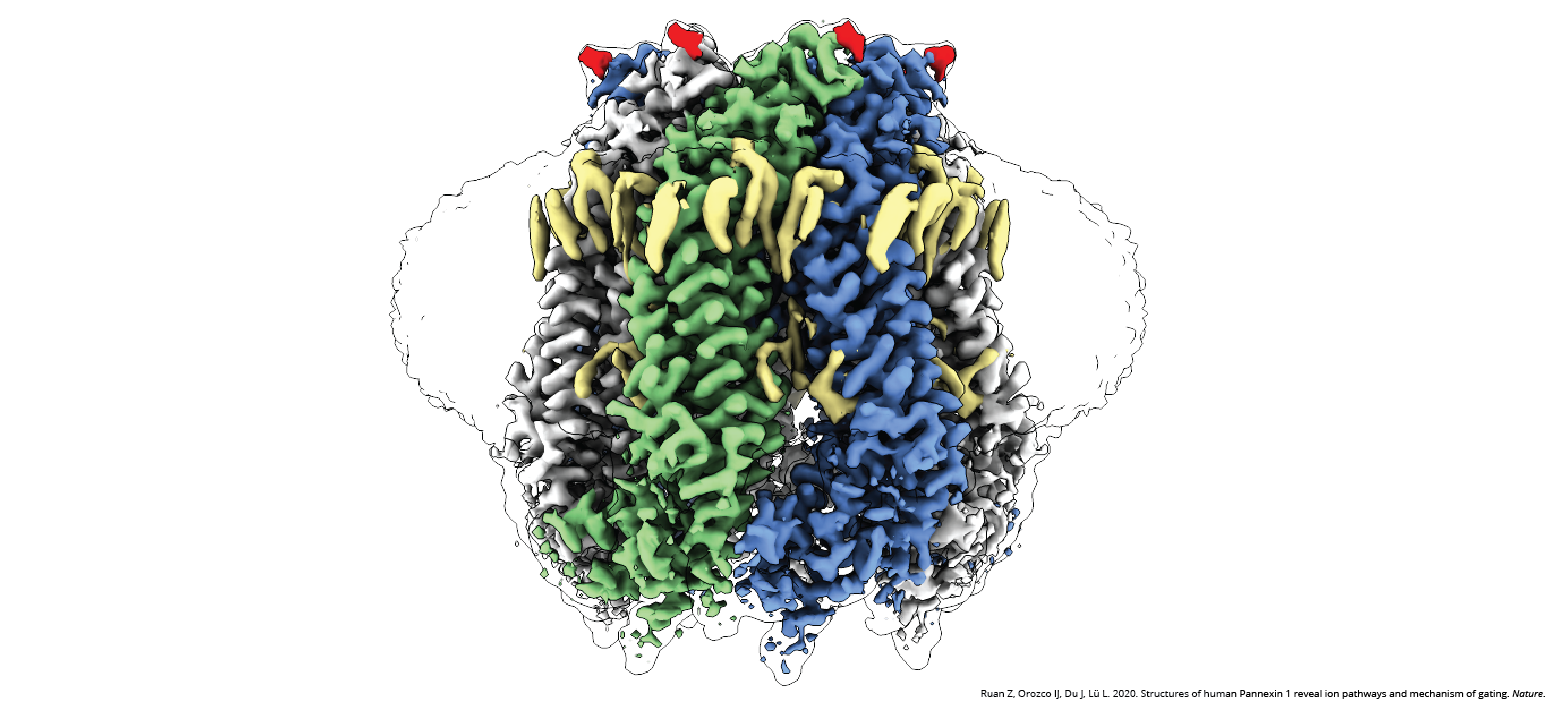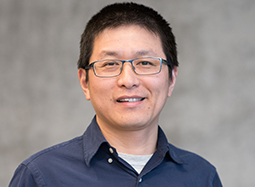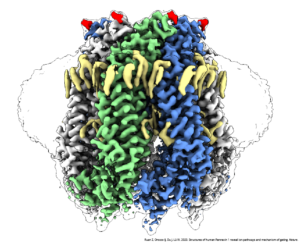Near-atomic blueprint reveals inner workings of drug target for cancer, other diseases
June 3, 2020

GRAND RAPIDS, Mich. (June 3, 2020) — Van Andel Institute scientists have for the first time described the near-atomic level structure of a molecular pathway that plays critical roles in human development, blood pressure regulation, inflammation and cell death. The findings were published today in the journal Nature.

“The pannexin1 channel, or PANX1, is vitally important for maintaining normal, healthy function and, as such, is a major target for treating a host of diseases,” said Wei Lü, Ph.D., an assistant professor in Van Andel Institute’s Structural Biology Program and co-corresponding author of the study. “Our new images provide a blueprint for drug development and also answer longstanding questions about how PANX1 works.”
PANX1 is a protein that is present in tissues throughout the body, where it forms channels that allow the passage of molecules such as the cellular fuel ATP, along with much smaller ions. Drugs that interfere with PANX1 have shown promise as therapies for a number of diseases, including cardiovascular diseases and cancer. Until now, little was known about how exactly these agents interact with PANX1.

The study revealed key changes in PANX1 during normal conditions versus times when the cells are undergoing apoptosis, a process that recycles damaged and dead cells. These variations cause molecules and ions to be routed through different areas of the channel and determine whether a large pore is open or closed.
Under normal conditions, the pore is blocked, and only small ions are allowed through seven narrow side tunnels in PANX1. However, during apoptosis, the pore is opened and ATP is released, which sends a signal that kicks off cellular recycling.

“These insights will be impactful beyond our understanding of PANX1 — they also shed light on how other similar large-pore channels function,” said Juan Du, Ph.D., an assistant professor in VAI’s Structural Biology Program and co-corresponding author of the study.
In addition to Du and Lü, authors include lead author Zheng Ruan, Ph.D., and Ian J. Orozco, Ph.D., of VAI. The findings were made possible by VAI’s state-of-the-art David Van Andel Advanced Cryo-Electron Microscopy Suite, which allows scientists to view some of life’s smallest components in exquisite detail. VAI’s most powerful microscope, the Titan Krios, can visualize molecules 1/10,000th the width of a human hair. The high-performance computing team at VAI also provided support for this work.
Research reported in this publication was supported by Van Andel Institute.
Lü is supported by the National Heart, Lung, and Blood Institute of the National Institutes of Health under grant no. R56HL144929. Du is supported by the National Institute of Neurological Disorders and Stroke of the National Institutes of Health under grant no. R01NS111031, a McKnight Scholar Award, a Klingenstein-Simons Scholar Award and a Sloan Research Fellowship in neuroscience. Ruan is supported by an American Heart Association postdoctoral fellowship for his study on the PANX1 channel. The content is solely the responsibility of the authors and does not necessarily represent the official views of the National Institutes of Health or other granting organizations.
###
ABOUT VAN ANDEL INSTITUTE
Van Andel Institute (VAI) is committed to improving the health and enhancing the lives of current and future generations through cutting edge biomedical research and innovative educational offerings. Established in Grand Rapids, Michigan, in 1996 by the Van Andel family, VAI is now home to more than 400 scientists, educators and support staff, who work with a growing number of national and international collaborators to foster discovery. The Institute’s scientists study the origins of cancer, Parkinson’s and other diseases and translate their findings into breakthrough prevention and treatment strategies. Our educators develop inquiry-based approaches for K-12 education to help students and teachers prepare the next generation of problem-solvers, while our Graduate School offers a rigorous, research-intensive Ph.D. program in molecular and cellular biology. Learn more at vai.org.